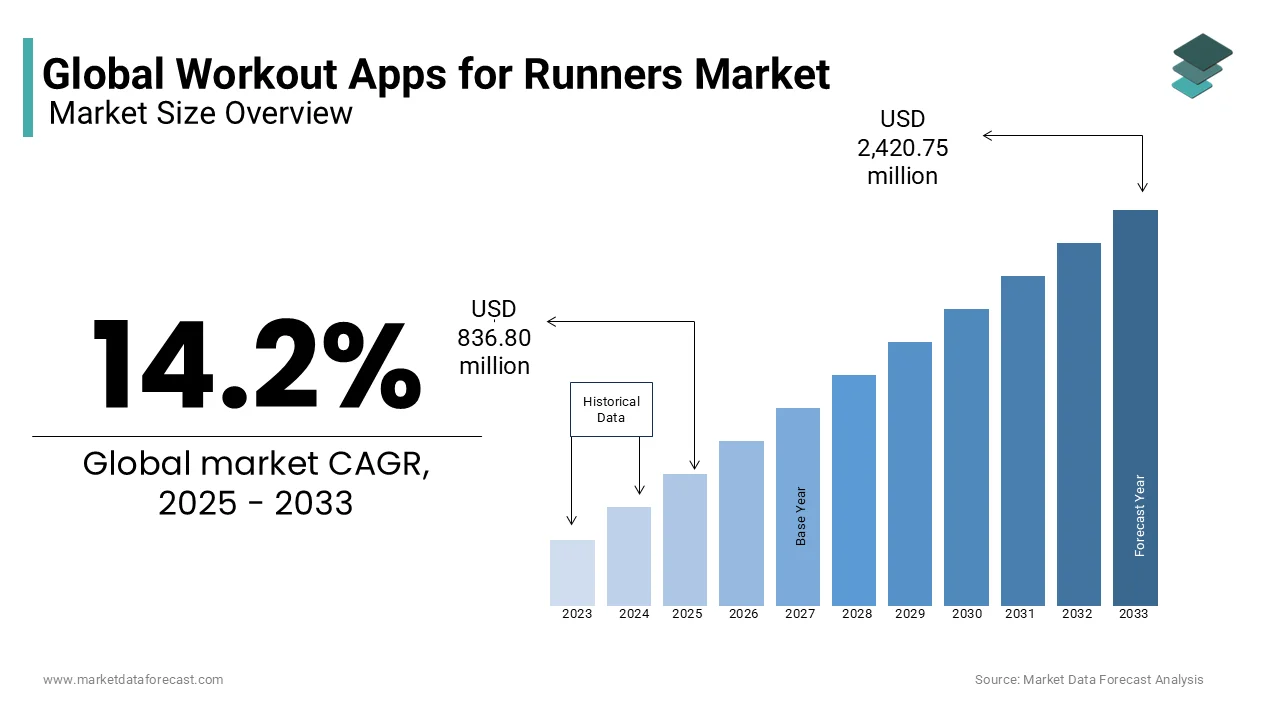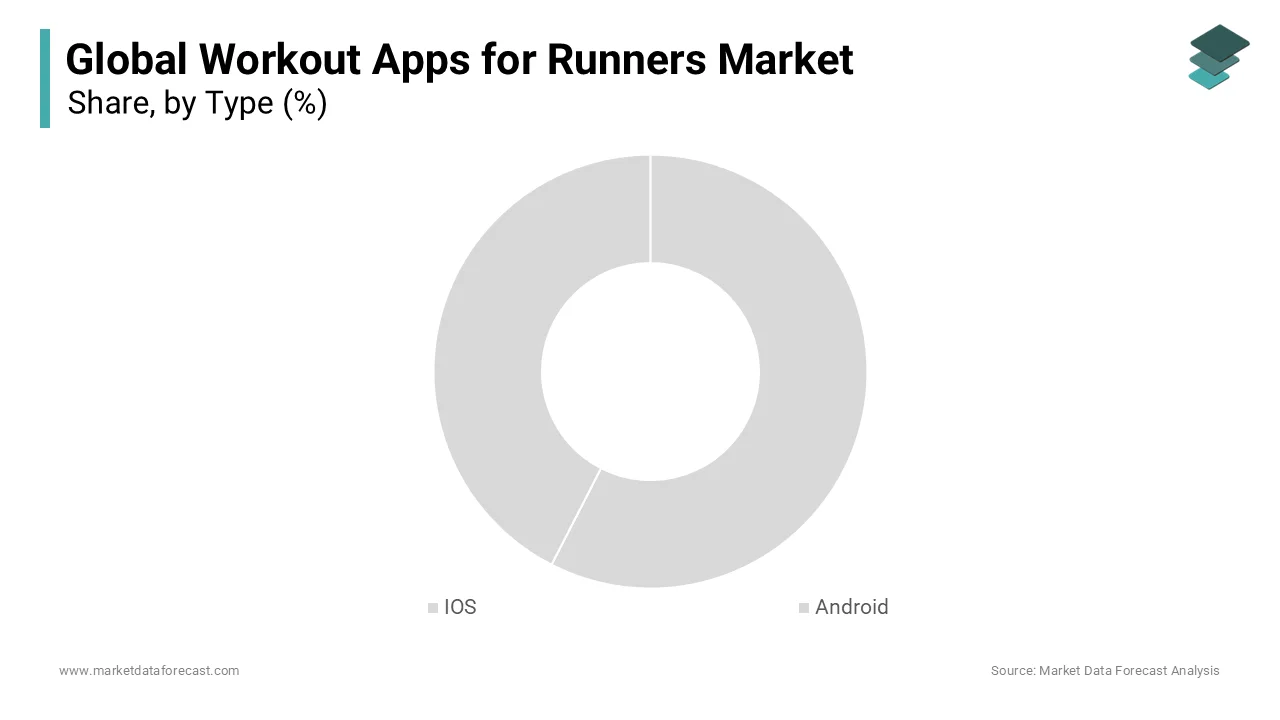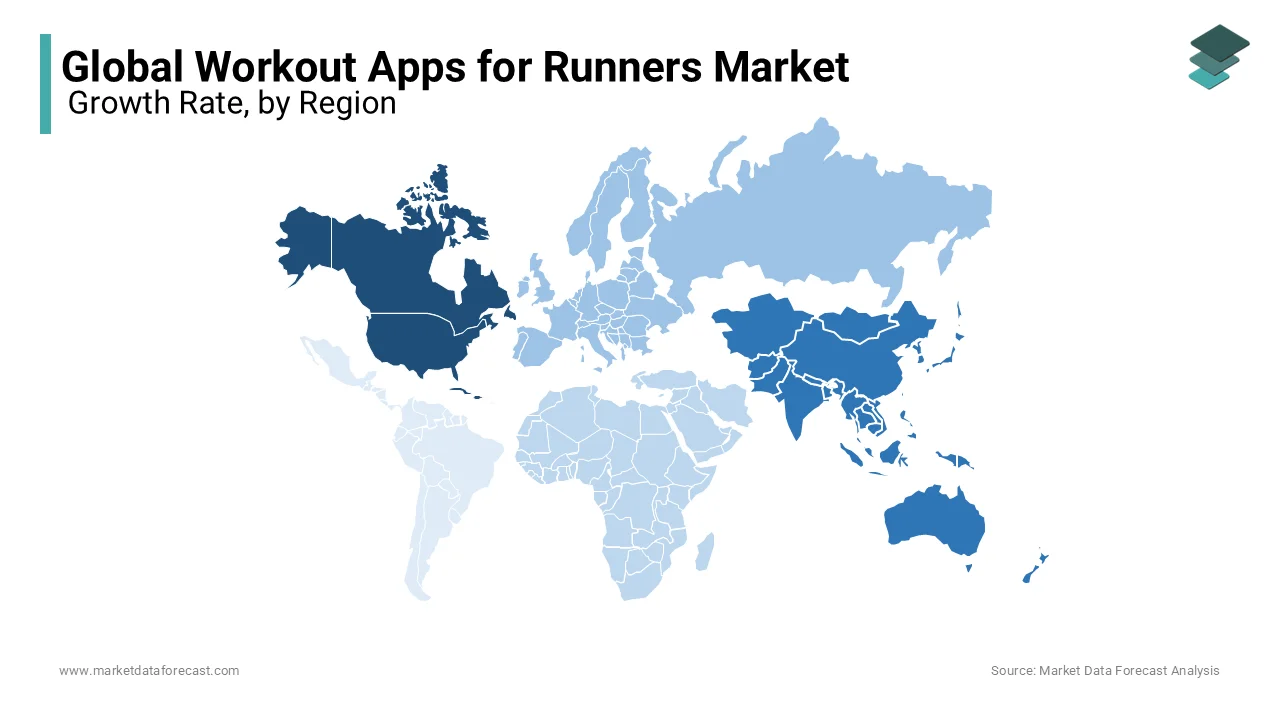Global Workout Apps for Runners Market Size, Share, Trends, & Growth Forecast Report By Type (IOS and Android), Device (Smartphones, Tablets, and Others), Pricing Type (Monthly Subscription, Quarterly Subscription, and Yearly Subscription), End User (Amateurs and Professionals), and Region (North America, Europe, Asia Pacific, Latin America, and Middle East & Africa), Industry Analysis From 2024 to 2033
Global Workout Apps for Runners Market Size
The size of the global workout apps for runners market was worth USD 732.8 million in 2024. The global market is estimated to be worth USD 2,420.75 million by 2033 from USD 836.80 million in 2025, growing at a CAGR of 14.2% during the projection period 2025 to 2033
 .
.
Running attracts a wide range of participants in terms of socio-demographic traits, as well as motivations (such as health, freedom, social experience, fun, and performance enhancement) and experience (e.g., both novice and experienced runners). In addition, there has been a shift away from private track and field clubs and toward big groups of people jogging alone or in small groups. Running events are the 'new' bearer of the expanding popularity of recreational and unorganized running. Certain issues must be addressed due to the enormous number of runners and increasing heterogeneity. Personalized coaching and assistance are losing popularity, which sometimes leads to dropout due to injury or demotivation. To maintain appropriate and sustainable sports engagement among novice and less experienced runners, substantial supervision is required.
The runner’s Workout app is a mobile application that can be downloaded and used anywhere to get a workout plan and get in shape. This software can be used to manage calorie consumption, gather workout efficiency time, and share progress on social media to encourage healthy behavior. Fitness apps can be used with any wearable device to sync health data with third-party devices for convenience. In recent years, there has been an exponential expansion in the availability and use of sports and physical activity-related monitoring gadgets and software, which is in keeping with the trend toward more disorganized running.
MARKET DRIVERS
Increase Need for a Healthier Lifestyle
The rise in the need for a healthier lifestyle is an important driver for the growth and development of workout apps for the runners’ market. The recreational running component of unorganized sports has grown dramatically all around the world. Running habits have shifted away from personal tracks and field clubs and toward small groups or solitary training. Running is popular because it is enjoyable, liberating, and provides intense physical exertion. These amateur runners do not have access to fitness professionals or coaches who can provide them with suitable instruction. Running apps on wearables and smartphones gives the required information and assists in tracking a participant's performance and calorie intake. The market demand will be bolstered even more by the large range of technological devices available. During the projected period, these factors are expected to fuel the expansion of the running apps market. These apps are used by both professional and amateur runners, which is driving up demand worldwide.
Consumers desire to live healthy lives. People are being forced to reconsider their fitness levels due to the rise in chronic ailments such as diabetes, hypertension, and sedentary lifestyles. People also demand customized, cost-effective tracking solutions. As a result, the market for running apps is expected to rise during the forecast period. The tide of digital change is accelerating, especially in the aftermath of the epidemic. People are using their smartphones for longer periods of time. People are increasingly using web apps because of the convenience and customizable tracking possibilities they provide. Running applications are becoming more popular due to their user-friendly layout and customized consumer choices. As a result of the benefits presented, the market for operating apps will develop over the review period as a result of widespread adoption.
MARKET RESTRAINTS
Data Privacy Concerns
Data privacy concerns are a big roadblock for the training apps for the runners’ industry. Some applications have been observed to measure data erroneously in rare instances. This is especially harmful when measuring data like heart rates. For patients with cardiac illness, this inaccurate reading could lead to overexertion and associated health consequences. As a result, consumers are cautious about using these apps, which slows the global market's growth.
REPORT COVERAGE
|
REPORT METRIC |
DETAILS |
|
Market Size Available |
2024 to 2033 |
|
Base Year |
2024 |
|
Forecast Period |
2025 to 2033 |
|
CAGR |
14.2% |
|
Segments Covered |
By Type, Device, Pricing Type, End-User and Region |
|
Various Analyses Covered |
Global, Regional & Country Level Analysis, Segment-Level Analysis, DROC, PESTLE Analysis, Porter’s Five Forces Analysis, Competitive Landscape, Analyst Overview of Investment Opportunities |
|
Regions Covered |
North America, Europe, APAC, Latin America, Middle East & Africa |
|
Market Leaders Profiled |
Nike+, Runkeeper, Runtastic, Under Armour, Sports Tracker, Garmin, Codoon, Strava, Couch to 5K (C25K), and others. |
SEGMENTAL ANALYSIS
By Type Insights
Based on type, the Android segment is expected to dominate the market during the forecast period, accounting for 87% of the global market in 2024.

By Device Insights
Based on devices, the smartphone segment is expected to hold the leading share of the global market during the forecast period owing to the increased use of smartphones and internet penetration. Anyone can easily download an application on their smartphone and use it as per their convenience. Mobile phones are handy and easy to carry, thus people can use the application swiftly while running.
By Pricing Type Insights
All applications offer the above-mentioned pricing schemes, however, people who are new to running, prefer monthly plans since they are not sure about how long would they continue the running routine. However, everyday runners go for yearly plans as they are much more economical and cost-efficient.
By End User Insights
Based on end users, the amateurs segment is expected to hold the largest share of the global market during the forecast period as they use the applications on a frequent basis. This is because they are new to the field and require some guidance. Professionals already have the knowledge and do not require any extra analysis.
REGIONAL ANALYSIS
North America is expected to dominate the exercise apps for runners’ market during the forecast period, and it is predicted to grow at the fastest rate throughout the forecast period, owing to an increase in demand for modernizing fitness systems across the region. In addition, the market is expected to develop because to an increase in demand from healthcare institutions for easy and risk-free fitness transformations.

However, due to an increase in the requirement to monitor a rising variety of healthcare and fitness conditions such as obesity, the Asia-Pacific fitness app industry is predicted to rise significantly throughout the forecast period.
KEY PLAYERS IN THE MARKET
Companies playing a leading role in the global workout apps for the runners market include Nike+, Runkeeper, Runtastic, Under Armour, Sports Tracker, Garmin, Codoon, Strava, Couch to 5K (C25K), and others.
RECENT HAPPENINGS IN THE MARKET
-
The Tour de France and the Tour de France Femmes alongside Zwift have established a three-year agreement with Strava. Inside the Strava app, the Tour de France and the Tour de France Femmes avec Zwift will 'come to life' with a content area dedicated to presenting the tale of the riders through their daily activity uploads and images. Inside Segments, fans will be able to revisit the day's best performances.
-
Smartwatches continue to dominate the wearables industry, but Garmin believes there is still enough demand for dedicated activity trackers to upgrade its vvosmart line for the first time in over three years with the new vvosmart 5, which has a larger screen and longer battery life than smartwatches.
MARKET SEGMENTATION
This research report on the global workout apps for runners market has been segmented and sub-segmented based on type, pricing type, end-user and region.
By Type
-
IOS
-
Android
By Device
-
Smartphones
-
Tablets
-
Others
By Pricing Type
-
Monthly Subscription
-
Quarterly Subscription
-
Yearly Subscription
By End User
-
Amateurs
-
Professionals
By Region
-
North America
-
Europe
-
Asia Pacific
-
Latin America
-
Middle East & Africa
Frequently Asked Questions
What are the key drivers for the growth of the workout apps for runners market?
Key drivers include the increasing adoption of smartphones, rising health awareness, the popularity of running as a fitness activity, technological advancements in app development, and the integration of features like GPS tracking, personalized training plans, and social sharing.
What are the emerging trends in the workout apps for runners market?
Emerging trends include the integration of artificial intelligence and machine learning for personalized coaching, augmented reality (AR) for immersive running experiences, increased focus on mental well-being with mindfulness features, and partnerships with fitness brands and events for enhanced user engagement.
What challenges does the workout apps for runners market face?
Challenges include data privacy concerns, high competition leading to market saturation, the need for continuous innovation to retain users, and addressing diverse user preferences and fitness levels. Additionally, ensuring app accuracy and reliability is crucial for user trust.
What are the most popular features in workout apps for runners?
The most popular features include GPS tracking, personalized training plans, performance analytics, social sharing and challenges, audio coaching, integration with wearable devices, and music streaming capabilities. These features enhance user experience and engagement.
Related Reports
Access the study in MULTIPLE FORMATS
Purchase options starting from $ 2500
Didn’t find what you’re looking for?
TALK TO OUR ANALYST TEAM
Need something within your budget?
NO WORRIES! WE GOT YOU COVERED!
Call us on: +1 888 702 9696 (U.S Toll Free)
Write to us: [email protected]